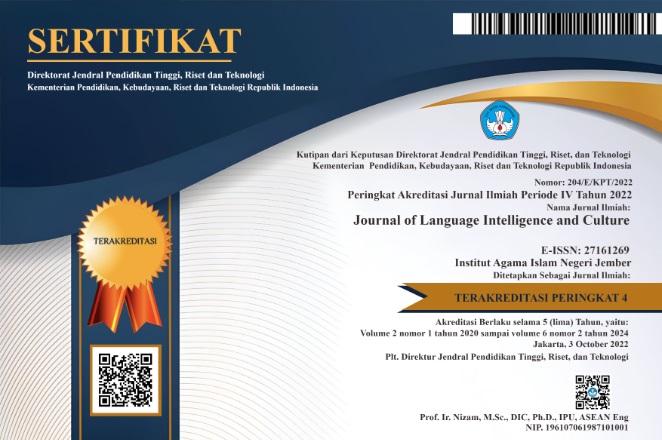Author Guidelines
- The manuscript submitted via website: https://jlic.uinkhas.ac.id/index.php/jlic/index
- The Manuscript should be written in Indonesian or English and should be original, unpublished, and not under review for possible publication in any other journals.
- The article should at least consisting of 3000 to 3500 words and having at least 25 references
- The identity of the Manuscript requires; title, full name(s) of the author(s), affiliation, email, abstract, and keywords
- The contents of papers for empirical research consist of Introduction, Method, Results and Discussion, Conclusion, Acknowledgment, and References.
- INTRODUCTION, consisting of background, research problems, summaries of previous relevant studies, the gap of knowledge, and research objectives. written in one chapter without subtitles.
- METHOD, consists of research design, data collection, population, and sample, data source, data collection technique, and data analysis. It is written in paragraph form.
- RESULTS AND DISCUSSION, Researchers need to inform several important (original) field data obtained from interviews, observations, questionnaires, surveys, documents, and other data collection techniques. The findings are presented in full and are related to the pre-determined scope of research. Findings can be supplemented with tables, graphs, and/or diagrams. The result of data analysis is explained correctly in the article. The discussion part logically explains the findings, associated with the relevant sources.
- CONCLUSION, The conclusion contains a short summary of the findings and discussion, presented briefly, narrative, and conceptual. Avoid using bullet and numbering.
- REFERENCES, The citation, and references are referred to American Psychological Association (APA) style sixth edition, by using manager reference (Mendeley/Zotero).
TERMS OF TABLE, GRAPH, AND FIGURE
- The table, graph, and figure must be in accordance with the needs of informative papers.
- Each table, graph, or figure must be followed by a caption. For tables, the caption is placed above. For figures and graphs, the caption is placed under.
- Tables, graphs, and figures should be placed at the beginning or end of a page.
- Before inserting a table, graph, or figure, the author is emphasized to provide a review narrative related to the table, graph, or figure that will be presented accompanied by listing the number of the table, graph, or figure presented.
- A good resolution figure.
- Graph legends should be written in the box.
- A table consists of two rows minimum, contains a calculation yet no unit repetition.
- The table only uses lines at the top and bottom of the table head and closes at the end of the data.
- If there are two/or more tables having interrelated content, it should be placed close together.
- A table, graph, or figure presentation may combine two text fields if needed.

This work is licensed under Attribution-ShareAlike 4.0 International (CC BY-SA 4.0) .
Based on a work at HTTP: https://jlic.iain-jember.ac.id/index.php/jlic












